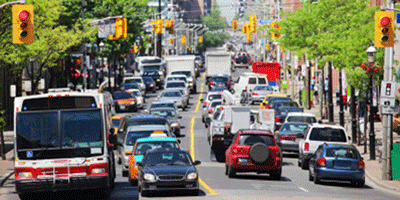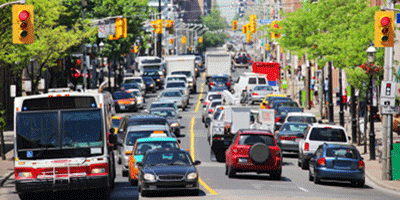Cities Fragment Under Traffic Burden
A town is built around a main street, but cities tend to have several centers around which inhabitants organize their lives. A new model suggests that the transition from monocentric to polycentric organization is driven by traffic congestion. The authors, writing in Physical Review Letters, assume that cities are unstable because of a tension between the inhabitants’ desire for high paychecks and their dread of long commutes. Their model predicts the number of “activity centers” as a function of population, which might help urban planners prepare for city growth.
Previous models of city structure have focused on the way that businesses tend to group together into centers, which attract workers to settle nearby. However, these models tend to be static and thus are unable to reproduce the way that cities grow and eventually divide into multiple centers.
To capture the dynamics of city structure, Rémi Louf and Marc Barthelemy of the Atomic Energy Commission (CEA) in Gif-sur-Yvette, France, have taken a new approach, in which the attraction of an activity center competes with the resulting traffic problems. They assume wages are randomly distributed across different regions of a city (an approximation that resembles the way physicists deal with the complex field distributions inside a large atom). With a small population, everyone takes a job where wages are highest, thus forming a single center. But as new inhabitants are added, this monocentric structure becomes too clogged, and new activity centers form with shorter commutes. Louf and Barthelemy show that the number of centers grows with population at a rate slower than linear, a trend that agrees with the researchers’ analysis of data from U.S. cities. – Michael Schirber





